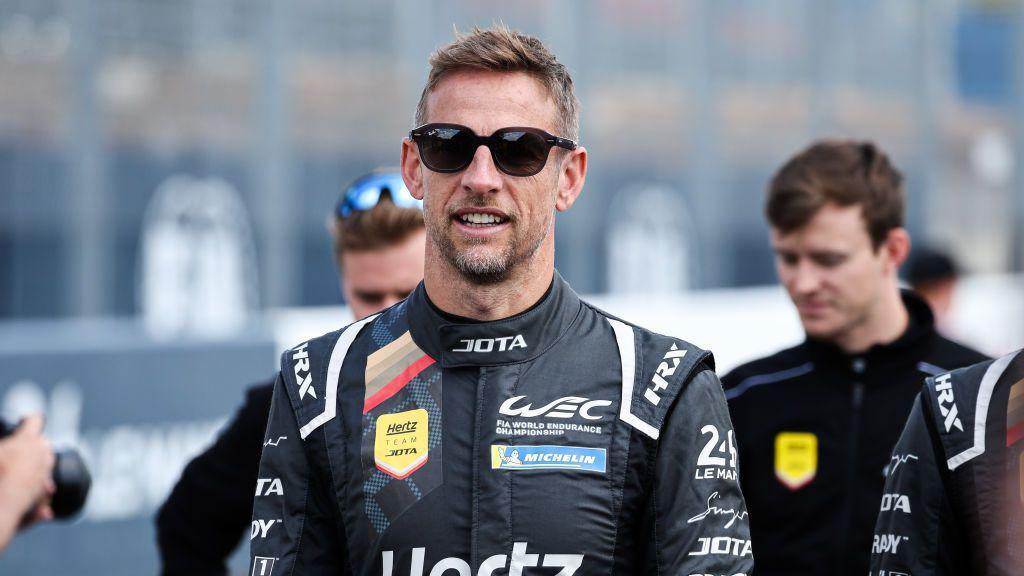What is 24 Hours of Le Mans?
- Published
Le Mans is an iconic and challenging 24-hour endurance race which tests the limits of drivers and cars.
This year's event - the 93rd edition - begins on Saturday at 15:00 BST.
It's held at the semi-permanent Circuit de la Sarthe, located in Le Mans, France. The track is 8.5 miles (13.6km) long with 38 turns and a mix of high-speed sections and slower corners.
The 2025 grid consists of 62 teams, 186 drivers and 13 manufacturers. Ferrari, in the top-tier Hypercar category, are aiming for a third consecutive victory.
The two other car classes are LMP2 and LMGT3. All three categories run on the track at the same time.
Le Mans forms part of the motorsport triple crown - the prestigious, but notoriously difficult, achievement of winning the 24-hour race, the Indianapolis 500 and the Monaco Grand Prix in Formula 1.
Graham Hill - the 1962 and 1968 F1 world champion - is the only driver to win all three.
Get in touch
Send us your questions
Who are the big names?

F1 2009 champion Jenson Button has participated in Le Mans in 2018, 2023 and 2024
Ex-Formula 1 drivers competing this year include 2009 world champion Jenson Button, making his fourth apearance, Italian Antonio Giovinazzi, who won Le Mans in 2023 with Ferrari, and former Haas drivers Kevin Magnussen and Mick Schumacher.
Britain's Jamie Chadwick, the three-time W Series champion, is one of five female racers taking part and runs in the in LMP2 class.
MotoGP legend Valentino Rossi, driving in the LMGT3 category, is participating in his second Le Mans having made his debut in the endurance classic last year.
This article is the latest from BBC Sport's Ask Me Anything team.
How does it work?
Each team consists of three drivers who will alternate driving over the 24 hours.
Rotation allows drivers to take breaks and ensure they have maximum performance over the full racing period.
The team that covers the most distance or completes the most laps will win the race.
A driver cannot be in the car for longer than 14 hours in total.
There are three classes of cars, which have different specifications that can impact speed.
Hypercar, which has 21 cars, is reserved for professional drivers.
Le Man Prototype Two (LMP2) has 17 cars and Le Mans Grand Touring Three (LMGT3) has 24, driven by both professional and amateur drivers.
Drivers of each team are categorised into four sections - platinum, gold, silver and bronze.
There are four practice sessions, qualifying and hyperpole.
Hypercar has its own sessions for qualifying and hyperpole, while LMP2 and LMGT3 contribute in the same sessions.
In qualifying, drivers set out to record the fastest lap. The six fastest cars in each class then take part in the hyperpole - where they will aim to perform the fastest lap, which will be their ranking for the race.
Hypercar has eight manufacturers - Aston Martin, Porsche, Toyota, Cadillac, BMW, Alpine, Ferrari and Peugeot and uses Michelin tyres.
All LMP2 entries will use Oreca 07 cars, with Goodyear tyres.
LMGT3 cars also use Goodyear tyres and have nine manufacturers including Corvette, Ford, Lexus, McLaren and Mercedes.
What is Ask Me Anything?
Ask Me Anything is a service dedicated to answering your questions.
We want to reward your time by telling you things you do not know and reminding you of things you do.
The team will find out everything you need to know and be able to call upon a network of contacts including our experts and pundits.
We will be answering your questions from the heart of the BBC Sport newsroom, and going behind the scenes at some of the world's biggest sporting events.
Our coverage will span the BBC Sport website, app, social media and YouTube accounts, plus BBC TV and radio.